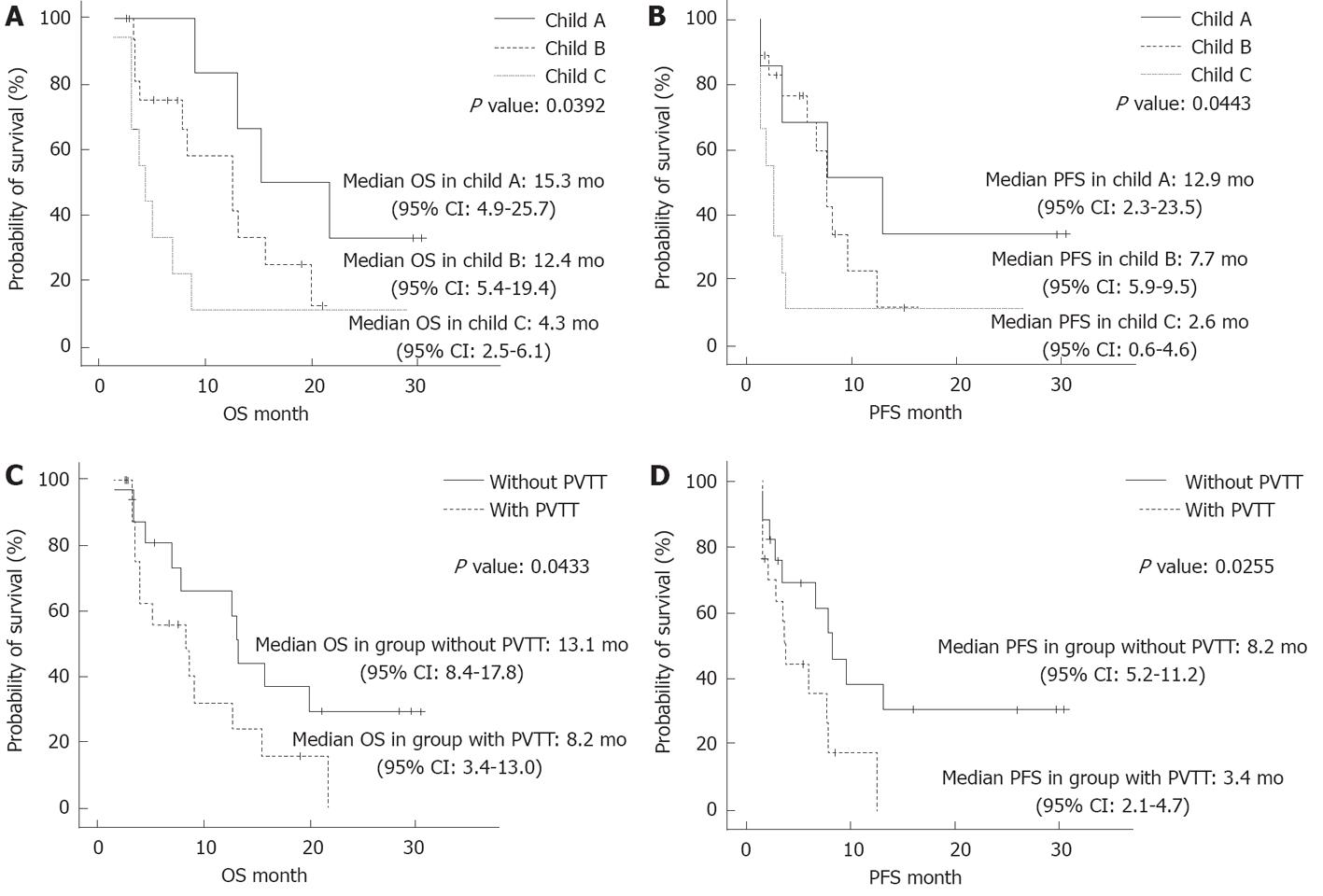Copyright
©2012 Baishideng Publishing Group Co.
World J Gastroenterol. Jul 14, 2012; 18(26): 3426-3434
Published online Jul 14, 2012. doi: 10.3748/wjg.v18.i26.3426
Published online Jul 14, 2012. doi: 10.3748/wjg.v18.i26.3426
Figure 1 Two cases of nearly complete response.
A: The first case was a 54-year-old patient with diffuse, multinodular hepatocellular carcinoma throughout the whole liver. After 9 cycles of hepatic arterial infusion chemotherapy (HAIC) with floxuridine, no enhancing nodular lesions were observed by dynamic contrast-enhanced computed tomography (CT); B: The second case was a 48-year-old patient with a large mass in the left lobe and intrahepatic metastasis in the right lobe. After transarterial chemoembolization treatment, viable masses were still observed in sequential CT images, and HAIC was started. After 8 cycles of chemotherapy, no viable masses were observed. TACE: Transarterial chemo-embolisation.
Figure 2 The overall survival and the progression-free survival determined by Kaplan-Meier analysis.
A: The overall survival (OS) determined by Kaplan-Meier analysis; B: The progression-free survival (PFS) determined by Kaplan-Meier analysis.
Figure 3 Kaplan Meier plot estimates of the overall survival and the progression-free survival according to the Child-Pugh classification and existence of portal vein tumor thrombus.
A: Kaplan Meier plot estimates of the overall survival (OS) to the Child-Pugh classification; B: Kaplan Meier plot estimates of the progression-free survival (PFS) according to the Child-Pugh classification; C: Kaplan Meier plot estimates of the OS according to existence of portal vein tumor thrombus (PVTT); D: Kaplan Meier plot estimates of the PFS according to existence of PVTT.
- Citation: Baek YH, Kim KT, Lee SW, Jeong JS, Park BH, Nam KJ, Cho JH, Kim YH, Roh YH, Lee HS, Choi YM, Han SY. Efficacy of hepatic arterial infusion chemotherapy in advanced hepatocellular carcinoma. World J Gastroenterol 2012; 18(26): 3426-3434
- URL: https://www.wjgnet.com/1007-9327/full/v18/i26/3426.htm
- DOI: https://dx.doi.org/10.3748/wjg.v18.i26.3426











